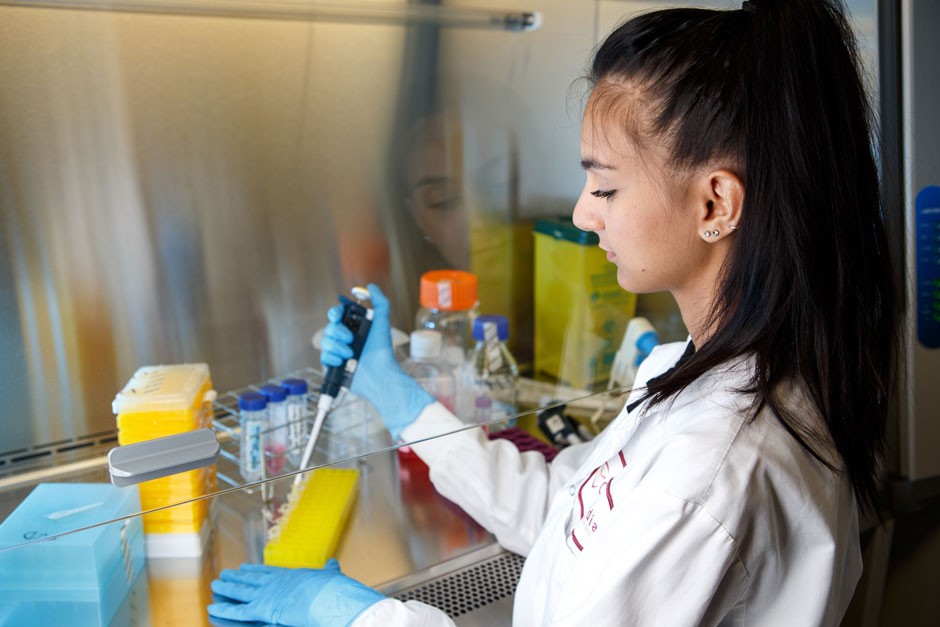Safety first at Concordia

The Environmental Health and Safety (EHS) team works to ensure that Concordians can work, study and conduct research in a safe environment. “Our objective is that you remain healthy throughout your time at the university,” says Frédéric Guilhem, acting director of EHS.
“We have established policies, guidelines and procedures that ensure workplace safety,” he says. “We let employees know what’s important for their own work safety and the safety of the ones around them.”
Guilhem outlines three main areas of activity for EHS: research and teaching safety, such as for labs using hazardous material or lasers; industrial hygiene and occupational health, which includes issues like water quality and ergonomics; and construction and facilities safety, which involves working on projects like Loyola Campus’s new Applied Science Hub and the ongoing Henry F. Hall Building renovations.
Successful implementation of safety programs
EHS has worked diligently for years on safety programs that involve research and teaching activities, and also implemented safety programs together with Facilities Management. Increasing safety during routine maintenance operations is important for employees involved in this work, day after day.
The control of hazardous energy is one example of an EHS-led program that involves collaboration across departments. The unit worked closely with Facilities Management to create more than 900 procedures for the Control of Hazardous Energy Program, which started in 2017.
We can provide a more global view of safety thanks to new projects and partnerships we have developed.
“We call them Lock Out, Tag Out Procedures. For example, when you work on the electrical system of your car, you unplug the battery first. We apply this program to control all potentially risky energy for our equipment and mechanical systems, such as in ventilators, escalators and elevators,” Guilhem says.
“After we develop new safety programs, we collaborate with stakeholders to help with implementation. We need to have our EHS employees directly involved in order to understand how others conduct their work so we can provide them with the safest way to do it,” he says.
Working with government
Aside from managing safety programs and providing safety training, EHS liaises with various governmental agencies that routinely inspect Concordia’s facilities and audit its safety programs.
In 2018, the Commission des normes, de l’équité, de la santé et de la sécurité du travail (CNESST) initiated a safety campaign targeting Montreal-region universities to verify compliance with machine safety and guarding regulations. In the same way that EHS inspections internally verify compliance with safety regulations in laboratories, workshops or construction sites, the CNESST visits and inspects all workplaces across Quebec.
“Thanks to EHS’s safety programs, the CNESST was satisfied with Concordia. We did not have any major issues,” Guilhem reports.
Furthermore, in the past year, “we heavily revised our chemical safety program. We updated and created many standard operating procedures to adapt and reflect the changes in research, such as for the new activities of the Department of Chemical and Materials Engineering,” he says.
“EHS places a lot of focus on employee safety — and everyone who works at Concordia is an employee,” Guilhem adds.
“To go further, we also accompany managers in their additional responsibilities as supervisors. We now offer a training program that provides all the information needed to demonstrate due diligence. We can provide a more global view of safety thanks to updated and new programs and partnerships we have developed.”



